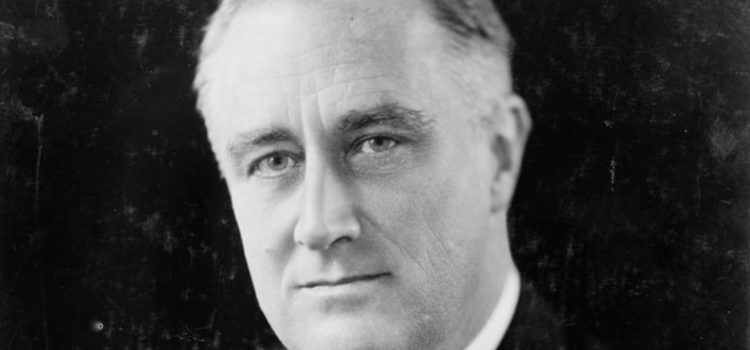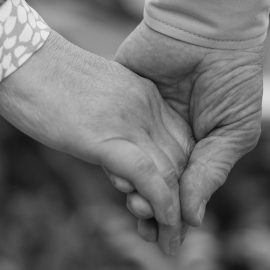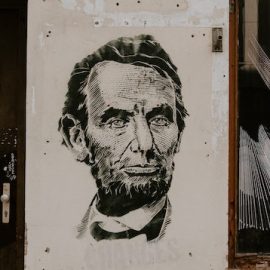

This article is an excerpt from the Shortform book guide to "Leadership: In Turbulent Times" by Doris Kearns Goodwin. Shortform has the world's best summaries and analyses of books you should be reading.
Like this article? Sign up for a free trial here .
What is Franklin Delano Roosevelt (FDR) known for? What was FDR’s greatest accomplishment as a president?
FDR, who was president from 1933 to 1945, was instrumental to American workers’ well-being; He was tasked with getting the nation through the Great Depression. Franklin D. Roosevelt successfully turned the nation’s economy around in spite of the major challenges. Historian Doris Kearns Goodwin attributes this accomplishment to his ability to empathize with others.
Here’s how empathy helped Franklin Delano Roosevelt lead the nation through an economic catastrophe.
How FDR’s Crisis Improved His Ability to Empathize
Goodwin explains that FDR’s crisis was his contraction of polio in 1921. Prior to his illness, FDR was physically active and regularly put his body under relative strain. But polio forced a dramatic physical transformation for FDR: He became paralyzed from the waist down and would experience chronic pain throughout his life.
(Shortform note: Some researchers suggest that FDR didn’t contract polio but rather Guillain-Barré syndrome, an autoimmune disease. While both diseases result in muscle weakness and paralysis, polio usually affects children—not adults, which FDR was when he became ill—and doesn’t usually result in chronic pain of the type FDR experienced.)
However, Goodwin argues that contracting polio ultimately improved FDR’s ability to empathize—a quality that didn’t come naturally to the president. Goodwin attributes this lack of empathy to his upbringing: FDR was an only child and was homeschooled until he was 14 years old. As a result, it wasn’t until later in life that he started learning social skills.
(Shortform note: Modern homeschooling experts suggest that homeschooling may harm your children’s ability to socialize if they don’t interact regularly with other children—as was the case with FDR. They emphasize that parents should ensure that homeschooled children connect with people who are different from them—like kids who aren’t homeschooled—so they learn the social norms essential to functioning in society.)
How did contracting polio teach FDR to empathize? Goodwin proposes two ways. First, FDR’s illness enhanced his connections to his peers. Prior to his illness, FDR had a team committed to helping him become president—including his wife, Eleanor Roosevelt. But after he became paralyzed, his ability to empathize improved because he became even more reliant on his team. It was through them that he gathered information and learned about the world, as they could go where he could not.
| How to Improve Empathy and Trust at Work Goodwin implies that FDR’s ability to empathize increased because he trusted his team, which was presumably relatively easy to do since it included family members like his wife. But how can you improve trust and empathy at work? Some experts argue that trust and empathy are interrelated: When you trust someone, you believe that they are authentic, logical, and empathetic (that they care about you). In other words, if you stop believing they’re empathetic, you’ll trust them less. Therefore, if you improve how empathetic people perceive you to be at work—such as by putting your phone away and becoming more engaged in the conversation—you’ll improve how trustworthy people think you are. |
Second, Goodwin argues that FDR’s illness improved his ability to empathize with people less fortunate than he. After contracting polio, FDR found a thermal pool in Georgia that eased the pain in his legs—which he eventually bought and transformed into Warm Springs, a rehabilitation center for polio patients and their families. For four years, FDR spent most of his time at Warm Springs, surrounded by polio patients of all stripes. It was this experience, Goodwin argues, that taught FDR how to relate to anybody—a quality he would need as president during the Great Depression.
(Shortform note: At Warm Springs, FDR talked extensively with people from different backgrounds and learned to live in a different world (one in which he had polio)—both of which are proven ways to increase your empathy. You can apply similar techniques in your own life: To talk to new people in a way that improves your empathy, experts recommend asking acquaintances to lunch and learning what their lives are like. To see what it’s like to live in a different world, they recommend spending more time in a different area of your city or attending a different house of worship for a few weeks.)
How FDR’s Crisis Affected His Leadership
Goodwin contends that FDR’s ability to empathize with others helped him lead during the Great Depression in two main ways.
First, Goodwin argues, this ability allowed FDR to connect with the American people, which led them to trust him and do what he asked. To demonstrate how critical this was to the nation’s economic recovery, Goodwin points to the impact of the president’s first nationwide radio address. In the early days of his administration, FDR passed emergency banking legislation that was a first step in pulling the nation out of the Great Depression. But for it to work, FDR had to persuade Americans to deposit their money in banks—a difficult task, since most Americans had initially pulled their savings out because they’d lost faith in the banks. But the day after FDR’s first nationwide address, the public returned their money to the banks—because FDR made them believe that they could.
Second, Goodwin argues, this ability to empathize allowed FDR to manage the team that would be essential to revitalizing the nation’s economy. Under FDR’s leadership, the government created several different kinds of projects to help restore the economy—but with so many different agencies and people involved, all with different ideas on which would work best, the discussions on which to pursue often became contentious.
FDR masterfully navigated these situations due to his empathy, Goodwin contends: He listened to disparate opinions, skillfully placated the people whose ideas he did not choose, and fostered reconciliation between those who disagreed. Thanks in large part to the work of FDR and this team, the nation successfully pulled through the Great Depression, Franklin D. Roosevelt’s biggest accomplishment.

———End of Preview———
Like what you just read? Read the rest of the world's best book summary and analysis of Doris Kearns Goodwin's "Leadership: In Turbulent Times" at Shortform .
Here's what you'll find in our full Leadership: In Turbulent Times summary :
- How great leaders grow from tragedy and personal challenges
- How FDR’s polio diagnosis helped him lead the country through the Great Depression
- Why Lyndon B. Johnson’s heart attack instrumental to the civil rights movement






